- Home
- Heating With Wood
- Wood Stove Installation
Wood Stove Installation
This post may contain affiliate links so I earn a commission.
Wood stove installation is probably the biggest consideration when shopping for a new wood stove.
If you are installing a wood stove where one has not been before, or are just looking to upgrade your older wood stove there are always going to be considerations unique to your circumstances.
Careful consideration of your home and its needs will lead you to understanding what wood stove would be best suited for your living environment.
This will allow you to make the best possible choices for your needs and your home's future value.
Wood Stove Installation - Placement
In a perfect world you would have all the room you need to place your wood stove, where it will not impact the space of other things in your home.
This is rarely the case though.
Choosing your wood stove and installing it is a balance between what your home needs and the space you have for your wood stove and its required hearth and fireproof barrier offsets.
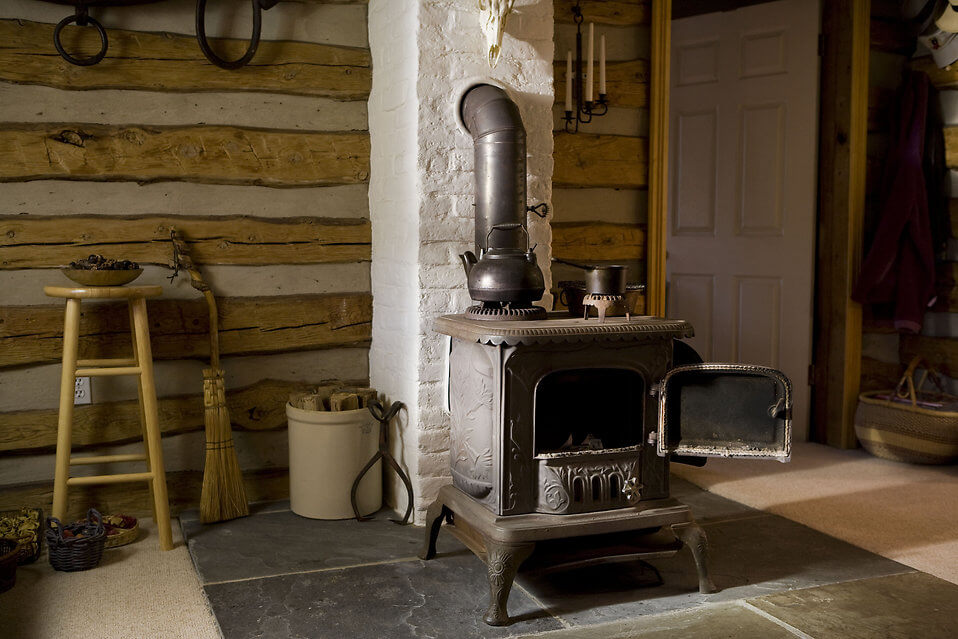
These numbers will change according to the stove model you choose as size and offset from flammable surfaces requirements will be different.
All new wood stoves will have offset requirements listed for them usually marked right on the stove, and they are always available through the manufacturer.
These offsets may be able to be reduced with the addition of guards mounted on the wood stove if they are available for that model.
These and other factors are key in understanding what is necessary for installing a new wood stove.
Before you undertake wood stove installation you must have a strong understanding of all of the factors involved.
Do You Already Have A Chimney?
If you have a hearth and chimney already, most of your wood stove installation will involve finding a wood stove or stove insert that will fit your existing structure or upgrading it to meet the needs of a new wood stove.
Since individual variations in structure are practically infinite we will only be addressing new installation here in depth.
Once you understand what you will need for space for your wood stove, then you can consider what type of chimney you will use and how it will be installed.
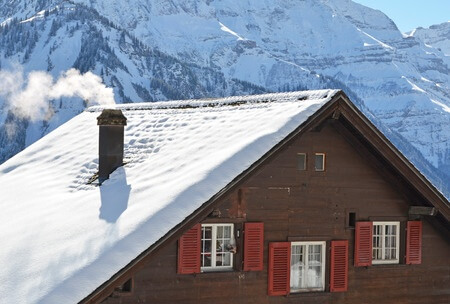
Masonry chimneys are the traditional choice for most wood burning stoves and fireplaces, but they involve a much higher entry cost when you are building a new one, and also require the most significant changes to the structure of your home.
Unless you are a purist who has to have a masonry chimney or you are building a new home or addition it does not make much sense to use one with all of the benefits in safety and function that a metal chimney can offer.
Chimneys whether masonry or metal, can be installed in two different ways.
Each way has its own pluses and minuses.
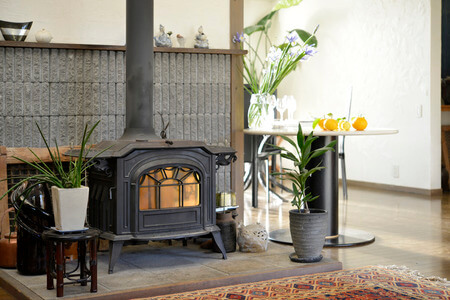
Depending on your building one way or the other may be the obvious choice for you.
For instance if you have 12” thick stone walls you are more likely to want to go up through the roof than to cut through the stone to exit the chimney out of the wall.
Wood stove installation with the chimney going up through the roof has the benefit of the chimney being enclosed in the building shell.
It will be warmer at start up so it will draw better helping you to get fires started more easily with less smoke in your living environment.
It also has the added benefit of the warm chimney rising through the building where its heat and thermal mass will heat more of the building, resulting in greater overall efficiency.
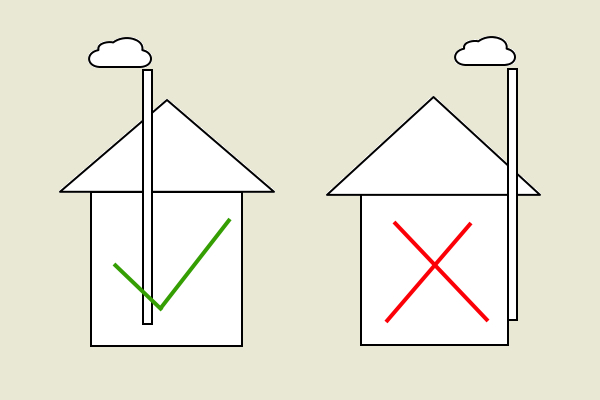
Since the chimney is warmer on startup and less influenced by outdoor temperatures when it is installed inside the house it has a reduced tendency to have creosote buildup, helping to keep your chimney cleaner longer, and reducing the likelihood of chimney fires.
The downside is that you will have to exit your chimney out of your roof.
This does make for a more complex roof structure that is more prone to leaking if it is not maintained.
There is also likely to be a higher overall cost of installation this way because of the need to do roof work and potentially modify framing, floors it passes through, etc.
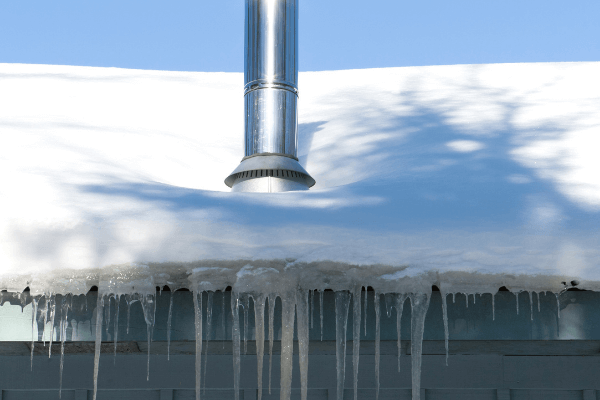
Wall exit chimneys for wood stove installation make a lot of sense when money is a consideration and you are retrofitting an older home.
The amount of framing work required is minimal compared to interior mounting, and you are not required to go through your roof.
All of the benefits listed above in the interior mounted chimney do not apply here.
The chimney will be colder at startup, it will accumulate creosote more quickly and the overall efficiency will be reduced since there will be heat lost through the chimney outside that would have warmed the building if it was inside the envelope.
It is easier and cheaper though, as well as offering a greater access to cleaning the chimney, and keeping that mess outside.
Wood Stove Installation - Choosing The Best Stove For Your Home
Nothing is ever completely clear cut when you are considering the potential benefits of different ways to go about your wood stove installation.
One person’s benefits are another person’s deal breaker.
Set your personal criteria for what is important to you, and how different choices will impact your home, and its value to you and future owners.
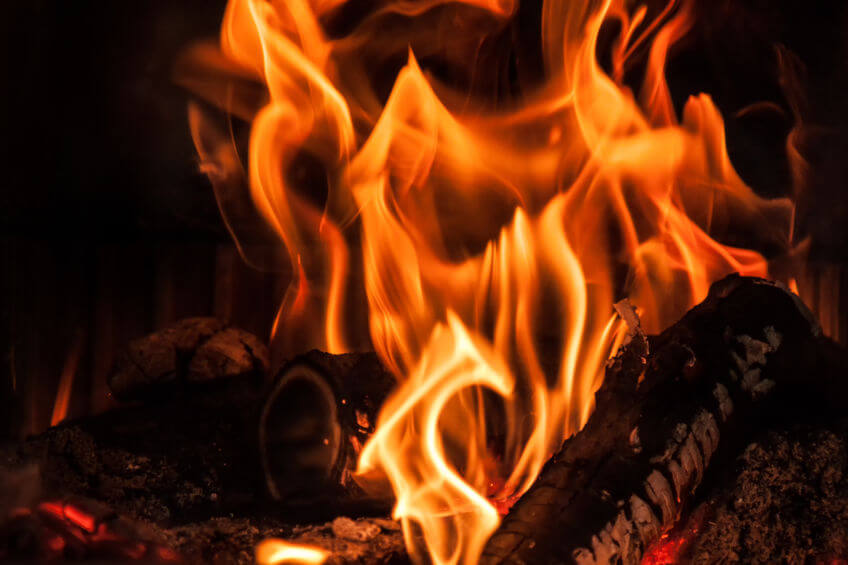
You will have to live with those choices and how they impact your life both positively and negatively.
If you put in a huge stove in hopes that you will heat your whole home, it will only work if your home is built in such a way that the heat can travel through the building.
In instances like this multiple smaller wood stoves might be better.
I have even seen some houses where they accommodate a wood stove in their home in the winter for all of its benefits, but then remove it during the warmer months when they want the space for other activities.
To do this you would have to have a portable hearth and be willing to install your wood stove every year, but for some people the benefits clearly outweigh the added difficulty.
Wood Stove Installation - Overall
Wood stove installation involves making a lot of choices.
Sometimes it seems that those choices compound making it hard to figure out just where to go with it.
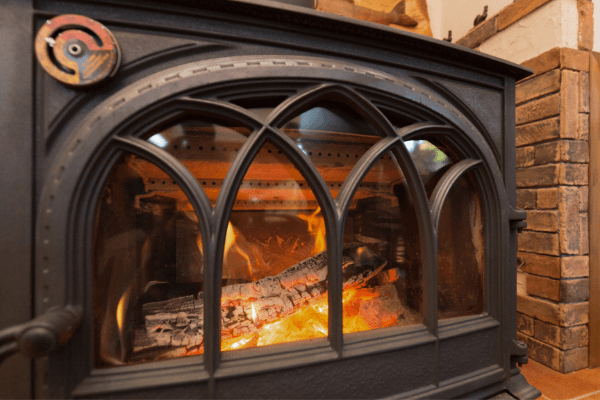
If you take your time and figure out what you want for your home, then decide what model best fits your needs and wants, you are halfway done.
Then it is a matter of installing the type of chimney that best fits your needs and budget.
None of this work is outside of the scope of a moderately skilled homeowner.
The first tile job I ever did was building my own portable hearth.
It has been used in multiple buildings with the same wood stove for over 13 years and is still going strong.
With a little bit of understanding and work, your wood stove installation can be done fairly quickly and can provide warmth and comfort for generations to come.

About the Author
Obsessed with firewood, Nick is behind over 350+ of Firewood For Life's articles, as well as countless reviews, guides and YouTube videos to help readers like you reduce heating costs and create the perfect fire.


